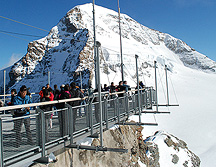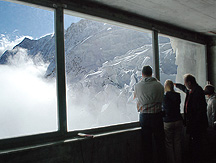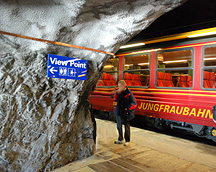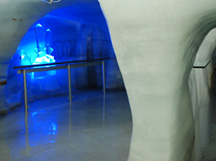Everything you are is determined by your thoughts. All the past experiences you have had up to this point in your life exist in your thoughts. Your entire future from this point on exists only in your thoughts. You've probably grown accustomed to thinking of yourself as your body however, you are more thought than you are physical substance. Your thoughts are what define you not the molecules and atoms that you happen to carry around with you. Your thoughts are what allow you to relate to the world and to the other people in it.
Your thoughts are what control every aspect of your life. All of your behaviour results from the thoughts you think. If you are not satisfied with your behaviour or your performance then all you have to do is change your thoughts and you will change your behaviour. This is what many people refer to as visualisation.
Here are four basic principles from Dr Wayne Dyer that will help to put your thoughts to work for you:
Your actions come from your images. If you constantly picture something in your mind, you will naturally move toward that thing. Whatever you see yourself doing, you will do it. Your circumstances do not determine what your life will be - they reveal the kind of images you have chosen up until now.
Tell yourself that everything you visualise is already here. Think about the concept that there is really no such thing as time. When you visualise something then it already exists for you. Your job is simply to bring it from the world of thought to the world of form.
Be willing to do whatever it takes to make it happen. Trying hard is not enough, being determined is not enough, giving it your 'best shot' is not enough. Everything that you can visualise is already waiting for you to be connected to it. Your willingness to do whatever it takes is what will make that connection.
Realise there is no such thing as failure - you only produce results. The concept of failure is based on someone's opinion of how you could have done. You cannot fail, it is not possible - you always produce results. If they're not the results you desire then you need to go back and examine your thoughts to see why they are leading you in the wrong direction.
Visualisation is so powerful because your thoughts are at the very core of your essence - in fact, you are your thoughts. To change anything in your life, all that's needed is a change in thought and a commitment to do whatever it takes to bring that thought into being.
By Ralph Marston
 The Jungfrau, the Mönch and Eiger are three Alps peaks joined into one solid mountain ridge massif which divides the Bernese Oberland Alps from the southern range. The Eiger is perhaps the most famous of the mountains, known for its treacherous North Face for mountain climbers. This mountain is also famous for its windows looking out on the permanent snows clinging to the steep crags. The windows of the Eiger are remnants of the building of the Jungfrau Railway to the Jungfraujoch, the highest railway station in Europe. Conceived by German engineer and visionary Adolf Guyer-Zeller, the Jungfrau Bahn Railway was begun in 1894 and completed in 1912. The rack rail line for most of its entire length, except for a distance from the Klein Sheidegg station, runs inside the mountain, tunnelling mostly through the Mönch and Eiger mountains before reaching its terminus below the 'saddle' or 'joch' between the peaks with the weather station, restaurant and observation building above called 'The Sphinx' - the Jungfraujoch Rail station is inside the rock.
The Jungfrau, the Mönch and Eiger are three Alps peaks joined into one solid mountain ridge massif which divides the Bernese Oberland Alps from the southern range. The Eiger is perhaps the most famous of the mountains, known for its treacherous North Face for mountain climbers. This mountain is also famous for its windows looking out on the permanent snows clinging to the steep crags. The windows of the Eiger are remnants of the building of the Jungfrau Railway to the Jungfraujoch, the highest railway station in Europe. Conceived by German engineer and visionary Adolf Guyer-Zeller, the Jungfrau Bahn Railway was begun in 1894 and completed in 1912. The rack rail line for most of its entire length, except for a distance from the Klein Sheidegg station, runs inside the mountain, tunnelling mostly through the Mönch and Eiger mountains before reaching its terminus below the 'saddle' or 'joch' between the peaks with the weather station, restaurant and observation building above called 'The Sphinx' - the Jungfraujoch Rail station is inside the rock. As the train travels through the tunnels of rock, a movie plays on screens telling the story of the ingenious railway, its construction and details about climbers on the Eiger and about the Aletsch Glacier which cloaks the mountain crags. Visitors are most curious about the windows in the Eiger mountain, made famous in the 'Eiger Sanction' film with Clint Eastwood. The train makes a stop at the windows so visitors can disembark for five minutes to peer out the side of the sheer face of a mountain. The windows are remnants of the construction tunnels. There are two sets at different elevations, the lower set allows views into the distance to the valleys below, the upper level at the Eismeer station look out onto the high crags and cliff face, usually covered in ice. The train stops at each before arriving at the Jungfraujoch station.
As the train travels through the tunnels of rock, a movie plays on screens telling the story of the ingenious railway, its construction and details about climbers on the Eiger and about the Aletsch Glacier which cloaks the mountain crags. Visitors are most curious about the windows in the Eiger mountain, made famous in the 'Eiger Sanction' film with Clint Eastwood. The train makes a stop at the windows so visitors can disembark for five minutes to peer out the side of the sheer face of a mountain. The windows are remnants of the construction tunnels. There are two sets at different elevations, the lower set allows views into the distance to the valleys below, the upper level at the Eismeer station look out onto the high crags and cliff face, usually covered in ice. The train stops at each before arriving at the Jungfraujoch station. At the Jungfraujoch station, there are a few activities to entertain visitors. The view deck of metal overhanging the edges of the building below the Sphinx Observatory Dome look out across the glacial ice to the long mountain valleys crowded with jagged peaks. Depending on the weather, you’ll stay her for a long or short time. When the sun is out, there is perhaps few more impressive mountain views but when the very changeable weather is bad, it can be a daunting experience outside. Behind the outdoor deck are full view windows in case outdoors is not the best idea. There is a restaurant and a snack bar to while away some time along with a souvenir shop and a little history corner with a model of the first rack railway trains which climbed through the mountain. Underneath the Sphinx and the station, an elevator ride down into the perpetual cool is the Ice Palace, a cavern carved from the ice of the glacier. Tunnels of glistening ice and sculptures fill the cavity, even sometimes a stairway into an upper chamber, lit by coloured light in a translucent iridescence. Since this is glacial ice, it needs to be re-carved from time to time so it’s never exactly the same if you go back again.
At the Jungfraujoch station, there are a few activities to entertain visitors. The view deck of metal overhanging the edges of the building below the Sphinx Observatory Dome look out across the glacial ice to the long mountain valleys crowded with jagged peaks. Depending on the weather, you’ll stay her for a long or short time. When the sun is out, there is perhaps few more impressive mountain views but when the very changeable weather is bad, it can be a daunting experience outside. Behind the outdoor deck are full view windows in case outdoors is not the best idea. There is a restaurant and a snack bar to while away some time along with a souvenir shop and a little history corner with a model of the first rack railway trains which climbed through the mountain. Underneath the Sphinx and the station, an elevator ride down into the perpetual cool is the Ice Palace, a cavern carved from the ice of the glacier. Tunnels of glistening ice and sculptures fill the cavity, even sometimes a stairway into an upper chamber, lit by coloured light in a translucent iridescence. Since this is glacial ice, it needs to be re-carved from time to time so it’s never exactly the same if you go back again. Prepare for a minimum of at least three hours for a trip to the Jungfraujoch starting from Interlaken Ost station and return. A good half day is more leisurely if you have lunch. If you want to make other stops in Grindelwald or Kleine Sheidegg, you will need to allow more time particularly if the weather allows for venturing out onto the outdoor trail of the Walking Plateau for the best views back towards the Sphinx. There is not a lot of hiking otherwise and no skiing or sporting centre. The air is a bit thin at the 11,330 ft altitude although not quite as high as the Klein Matterhorn on the southern range - the elderly and breathing impaired should take note. A ticket for the Jungfraujoch Railway trip includes the connections needed from Interlaken and you can take one of two routes on the way up either via Grindelwald or through Lauterbrunnen. It is possible to take one direction up and the other on the way down - with a Swiss Pass or other Eurail Pass the Jungfraujoch offers a 25% discount.
Prepare for a minimum of at least three hours for a trip to the Jungfraujoch starting from Interlaken Ost station and return. A good half day is more leisurely if you have lunch. If you want to make other stops in Grindelwald or Kleine Sheidegg, you will need to allow more time particularly if the weather allows for venturing out onto the outdoor trail of the Walking Plateau for the best views back towards the Sphinx. There is not a lot of hiking otherwise and no skiing or sporting centre. The air is a bit thin at the 11,330 ft altitude although not quite as high as the Klein Matterhorn on the southern range - the elderly and breathing impaired should take note. A ticket for the Jungfraujoch Railway trip includes the connections needed from Interlaken and you can take one of two routes on the way up either via Grindelwald or through Lauterbrunnen. It is possible to take one direction up and the other on the way down - with a Swiss Pass or other Eurail Pass the Jungfraujoch offers a 25% discount.


.jpg)







.png)
.jpg)


